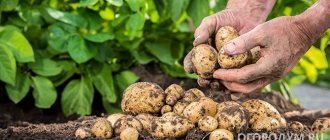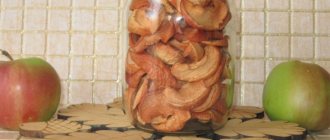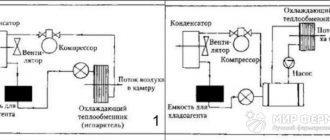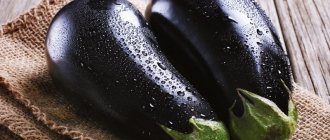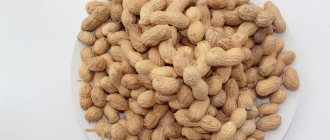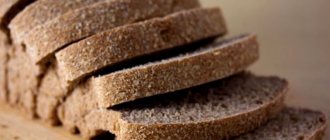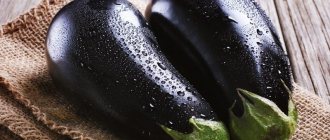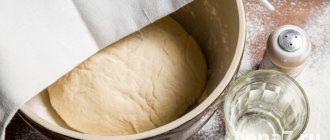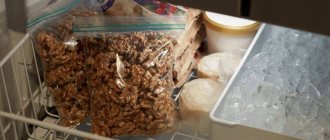Can you keep tea in the refrigerator? How to choose the right dishes for storage? Why are bags harmful to leaves and what to do if the tea goes bad?
Let's make a reservation right away: this article will focus on simple ways to preserve the life of tea in relatively small portions. But first, let's deal with the main enemies of tea leaves, and then select dishes that will maximally protect the tea leaves from their influence.
Humidity
One of the most important conditions for storing tea is the absence of humidity. Even a slight increase will lead to loss of taste and color of the brew. The more often tea comes into contact with air, the faster it will absorb moisture - especially in the kitchen, where something is boiling, steaming or washing all the time. Therefore, experts recommend storing tea in small batches in sealed packaging, in a room with air humidity of no more than 30–40%.
When properly produced and stored, black tea leaves contain up to 7% moisture, green tea leaves contain even less - up to 5%. If this figure rises to 8%, the tea leaves will begin to lose its aroma and taste, and at 11% humidity, mold and harmful microorganisms may grow on the tea leaves. A couple of infected leaves are enough to give the entire batch of tea a rotten, musty smell.
Interestingly, different varieties react differently to increased humidity. The most stable are high-quality and expensive ones: the integrity of the leaf and curling protect it from excess moisture. Pressed tea, on the contrary, absorbs moisture faster and more actively. And yet, we recommend not to experiment and keep the tea - like gunpowder, that is, exclusively dry.
Reasons for special storage of tea
To be honest, most people drink tea not because it is healthy, but because it has an interesting smell and taste, which differs for each variety. But during storage, tea leaves are able to absorb moisture from the air, and this leads to a distortion of its taste and smell, and then to spoilage of the product.
Humidity is the main indicator of tea. But all varieties react differently to an increase in humidity. For example, black and pressed teas absorb moisture the most, and green and loose teas do the least. In addition, high and expensive varieties of tea are also relatively safe. This is due to the fact that the better the leaf curl and its integrity are preserved, the less moisture it will absorb.
For example, according to the norm, black tea should contain up to 7% water, and green tea – up to 5%. As humidity levels increase, tea oxidizes and gradually loses its smell and taste.
REFERENCE! When humidity increases to 11%, there is a risk of mold and other microorganisms developing. Just one small infected area can ruin an entire batch of tea, making it taste and smell damp and slightly rotten.
In addition to moisture, tea leaves can also absorb the aromas that surround them. If tea is stored incorrectly, it will acquire the smell of foods near it. That is why it is necessary to maintain the tightness of the packaging.
Light
First of all, we are talking about sunlight. It literally destroys the leaves - it starts the oxidative process, which leads to the loss of nutrients. Tea in the light also loses color and taste. And we’re not just talking about direct sunlight: even dim, diffused daylight has an adverse effect on tea leaves. Guangdong and Wuyishan oolongs are especially affected by ultraviolet radiation. For them, darkness and tightness are more important than even storage temperature.
Remember this rule when purchasing: tea in glass jars on store shelves looks beautiful, but is absolutely useless. This also includes tea in transparent bags. If you still store blends in a glass jar at home, then it should either be made of dark glass or stand in a tightly closed cabinet without glass.
Factors that affect the preservation of tea
The shelf life of tea is calculated from the date it was picked. If the tea drink is stored improperly, its aroma, color, appearance and beneficial substances may change over time. Moreover, most often this happens due to the influence of environmental factors on it. As a result, it can “age” much faster than the indicated expiration date. Therefore, it is really important to know what has a big impact on tea.
Air humidity
You can usually buy dried tea on store shelves. Due to the fact that this drink is hygroscopic, that is, containing a small percentage of water, it can easily absorb all the moisture. As a result, microorganisms and mold can form in it at a faster rate. Therefore, it is not recommended to store tea leaves over a sink or gas stove, where there is often steam from cooking or hot water. It is desirable that the humidity percentage for storing tea should not be more than 65-70%.
Sun rays
Another enemy of tea is light. It increases the rate of oxidation in it, destroying all useful substances and pigments. Because of this, the dried leaves begin to turn yellow, the taste becomes much worse, the aroma disappears, and green teas become yellowish. It is recommended to store tea in an unlit place.
Rich smells
Tea has the ability to perfectly absorb all foreign odors. If you leave it near the fish for a couple of hours, the result when brewing is a tasteless drink that smells strongly of fish.
Air temperature
If the temperature in the room where the tea is stored is high, it will spoil much faster. Microorganisms such as mold, yeast and various bacteria will begin to develop in it. Unfortunately, it is unlikely that their formation can be completely stopped, however, it can be significantly slowed down. Simply store the tea drink in a cool place, such as a refrigerator or freezer. At low temperatures, the development of microorganisms will occur very slowly, which is why the shelf life of tea will increase significantly.
Important!
Freezing tea is not recommended. It is advisable that it be stored in a place where the temperature is between +1 and +2 degrees.
Interaction with air
It’s not for nothing that tea is made in hermetically sealed packaging. Indeed, due to its interaction with air, it begins to oxidize, which leads to the destruction of polyphenols and medicinal properties. That is why it is advisable to purchase tea leaves in small quantities and store them in a container that can be hermetically sealed.
Proper storage containers
To preserve the aroma, freshness and medicinal properties of tea, it is important to know in what container it should be stored. The two main criteria when choosing dishes are opacity and tightness:
- the best choice would be a ceramic or tin jar with a tight-fitting lid that does not allow moisture and odors to pass through;
- You can use glassware, however, you should make room for it in a dark cabinet so that the rays of the sun do not fall into it;
- There are containers made of foil in which tea leaves will also be well stored, but only if there is a coating that prevents foreign odors from penetrating inside;
- You should not leave tea in plastic containers, paper, fabric or plastic bags, as paper can allow oxygen and moisture to pass through, plastic can allow the sun's rays to pass through, and leaves begin to suffocate in bags and fabric.
Foreign odors
Tea has the ability to quickly absorb odors. Literally two or three days in an open, unsealed package - and your tea will acquire the notes of those products with which it was adjacent, be it spices in the kitchen cabinet or sausage and fish in the refrigerator.
Be careful with storage jars: for example, plastic containers can leak odors or absorb food aromas. When pouring tea, make sure that the container is well washed with hot water and does not smell anything. To preserve the unique taste of the drink and the subtle notes of its aroma, experts advise keeping each type of tea in its own jar, without changing them when the brewing is finished. That is, pouring green tea into a pu-erh jar, to put it mildly, is not the best idea.
Another useful habit is not to touch tea leaves with your hands. Even if your hands don’t smell of anything, your fingertips can still carry traces of sebum or sweat into the tea, which are not conducive to proper storage. It is best to transfer the tea with a clean spoon or spatula, or simply pour it over.
How to handle tea correctly
Such an exquisite drink requires an appropriate attitude. First of all, do not apply tea with your hands. To put the tea leaves into the teapot, use a spoon and or a wooden spatula. This experience will create a special mood for your tea ceremony.
Also, you should not compact the tea leaves. If you transfer them to storage containers and force them to the bottom, this will cause damage and quickly dissipate the aroma. Loose tea, in this case, will change the taste, regardless of how long you plan to store the tea leaves, in a glass jar or other container and at what temperature.
When purchasing, pay attention to the assembly date and shelf life of the tea indicated by the manufacturer. Obviously, fresh tea with a long date will last much longer.
Incorrect temperature
Experts recommend storing tea in a cool place, at a temperature between 0 and 18 degrees. Therefore, if we are talking about the kitchen, it is better to keep tea in a cupboard away from the stove, oven and other heat sources.
Light varieties prefer lower temperatures. Coolness is a particularly important condition for storing oolongs. For example, it is better to keep Taiwanese oolongs in vacuum packaging in the refrigerator, and Tie Guan Yin in the freezer.
You need to be extremely careful with frozen tea: store in small portions, take out the right amount and put the rest back quickly, avoiding thawing and re-freezing. It’s worth bothering with the freezer if you are storing an expensive type of tea for more than 3 months. In other cases, darkness, dryness and tightness are much more important.
Dark teas and pu-erhs feel great at room temperature. Both shu pu'er and shen pu'er do not require special temperature conditions. For them, dryness and the absence of foreign odors are much more important.
Reasons that negatively affect tea during storage
Classic processes to which the leaf undergoes:
- collection;
- withering - dehydration;
- processing - twisting or grinding;
- complete or partial fermentation - oxidation;
- drying.
The result of such complex production is high-quality, aromatic and healthy loose leaf tea. To preserve all its properties, follow several rules.
Away from heat sources
Loose leaf tea likes cool weather. Optimal storage conditions are room temperature (+20...+25°C), and ideal storage conditions are from +2°C to +10°C.
Green varieties, white and yellow, and light oolong prefer coolness.
Tea is an organic substance that is afraid of heat. At elevated air temperatures, bacteria and mold appear. Dry raw materials are best stored in a cool place. In the kitchen it's a refrigerator.
Without air access
Tea leaves absorb odors, moisture, harmful substances, deteriorate and become tasteless. Therefore, after purchase, it is recommended to separate them into two sealed containers of different sizes.
For daily use, take a small jar and fill it with a small amount of raw materials. The bulk of the tea in a large container interacts less with air and lasts longer.
High humidity
If the humidity is more than 60%, take care to seal the container in which the dry sheet is stored. If it absorbs excess moisture, it will lead to the formation of harmful substances and mold.
Contact with oxygen
During the production process, tea leaves go through a stage of fermentation - oxidation. The second time this process is unnecessary for tea.
With prolonged contact with oxygen, polyphenols are destroyed. These biologically active substances improve the functioning of the cardiovascular system, prevent the development of cancer, have antibacterial and antiviral properties, and slow down the aging process of the body.
Foreign strong odors
Dry tea leaves absorb any odors. The cuisine is full of aromas of dishes and spices. Therefore, it is impossible to completely protect tea from this. Exposure is reduced by storing it in an airtight container.
This is interesting:
Conditions and periods for storing kiwi at home.
Storing fresh cabbage until spring - what conditions are needed.
How to store mangoes so that the fruit does not spoil.
What not to store tea in:
- Cardboard or paper bags and boxes allow air and moisture to pass through.
- Fabric bags allow air to pass through and do not protect against foreign odors and moisture.
- Wooden boxes and caskets can convey the smell of wood, paint, varnish to tea; they are not always airtight.
- Tea in plastic bags will suffocate and become moldy.
- Plastic containers can transfer odors to tea.
Pest Control
Tea bags will be excellent helpers in the fight not only against insects, but also against household pests, such as rats and mice. Buy tea with mint or lemon balm, put the sachet in those places where uninvited guests most like to be (closet, area under the sink), and enjoy the effect. After carrying out several such procedures, rodents will not spoil your personal belongings and products.
As you can see, even a seemingly absolutely unnecessary thing, such as a tea bag, can bring a lot of benefits. The main thing is to know how to use it and not be afraid to experiment. So take a closer look around your apartment, take note of the things you were planning to throw away in the near future, and think about how they can be reused. Several interesting ideas are presented in the article 11 original ideas for reusing old things
Did you like the article? Then support us, click
:
It turns out that tea contains a large amount of nutrients that can become a high-quality fertilizer for your plants. Moreover, you can process indoor flowers, seedlings and all vegetable crops that grow in your garden.
How can you store tea?
- Ceramic and porcelain are great options, especially if the lid has a rubber gasket.
- Glass is also perfect for storage, just choose an opaque one or place the jar in a dark place, be sure to tightly close the lid.
- Foil packaging will protect from light, moisture, and foreign odors. The main thing is to take care of a special latch for closing the package.
- Iron cans will keep tea dry, but you should protect the can from heat and use a separate one for each variety.
Soothing after sun treatment
At the height of the summer season, everyone tries to spend as much time as possible in the sun to get a beautiful golden tan. However, ultraviolet rays are not always gentle on our skin, especially if we neglect cosmetics with SPF protection. If you are sunburned and do not have special pharmaceuticals, sour cream and kefir on hand, then use the following life hack: re-brew two or three tea bags in a small container, wait until the tea leaves cool, soak a towel in it and wipe the sun-damaged skin areas .
How and how long to store tea in the kitchen
Observing the basic rules for storing tea (dry, dark, airtight, no temperature changes), determine a suitable shelf or cabinet in the kitchen - with an opaque door, away from the stove and sink. To avoid opening jars again in search of a specific variety, make neat stickers: they will help you quickly find the tea you need. Since the size of the kitchen does not always allow you to allocate a separate cupboard for tea, store it with those products that do not smell (flour, cereals), or together with utensils for tea drinking.
When buying loose leaf tea, pay attention not to the packaging date, but to the harvest date. It is optimal if the difference between them is small: such a drink will delight you with a rich taste. Packaged branded tea should be stored according to the manufacturer's directions. After pouring it from the original packaging into a jar for storage, do not forget to put a leaflet with the expiration date there.
For loose varieties, you can focus on average terms and general principles: light varieties and oolongs are the most fragile and capricious to store, and red and pu-erh are the most unpretentious.
How long can loose tea be stored at room temperature?
- Light teas (green, yellow, white) – from 6 months to 1 year.
- Dark teas (black, red) – 1–2 years.
- Herbal teas – up to 1.5 years.
- Yellow tea – 4–5 years.
- Puer - up to 5 years.
Another important point: take care of the integrity of the leaves. If tea is stored in soft containers, do not place anything on top. Do not pack tea into a storage container. Whole leaves are less susceptible to oxidation and are better protected from moisture, which means they preserve the taste and beneficial properties of the drink.
Jars and utensils for storing tea at home
Choosing a suitable container will be the key to effective storage of tea in bags or loose leaves. What is important to pay attention to:
- Size,
- Light transmittance
- tightness,
- Material.
When answering the question in which container is best to store tea, it is worth pointing out that dishes made of porcelain, ceramics, glass and tin tubes are suitable for this. Such containers will provide excellent storage conditions, which will help the leaves of black, green, white, red and any other tea variety retain their properties.
The most suitable tableware options for storing tea are ceramic jars and tin cans. They do not allow light to pass through, and usually have a good seal - what is needed for proper storage.
In specialized stores you will find special porcelain teapots for storing tea. They already have all the necessary qualities for such dishes. The main thing is that they have a cool design in ethnic or modern style.
If you'll be using a drawer for storage rather than open shelves, glass jars will also work. Make sure that their lid fits tightly to the jar itself and does not let air through. When choosing specialized boxes, also pay attention to their tightness. Unlike glass jars, it can also be stored on open kitchen shelves or in the living room.
Avoid fabric, paper and cardboard boxes and containers. Typically, they are the second packaging in which manufacturers ship their products. In addition to it, you will definitely find a sealed foil package inside. After opening it, pour the tea into a more suitable container.
Cardboard box for black tea, plastic containers for Chinese tea, paper, cloth and cardboard for loose tea are poor options. You need to carefully choose a storage location for them. But this option may be suitable if you plan to consume the drink within a month.
Is it possible to store tea in a tin?
You can store tea in a tin can, but provided that it is sufficiently airtight. In addition, it is easier to select and buy such a jar than other types of storage containers.
Is it possible to store tea in a glass jar?
Storing tea in a glass jar is possible only if two conditions are met:
- Firstly, the lid fits tightly to the vessel, which creates a tight seal.
- Secondly, you store the jar itself in a dark box, out of direct sunlight.
How to store herbs for tea
Orange peels for tea, herbs picked in summer and other additives are also recommended to be stored in airtight containers. Humidity and lack of sunlight are also important for them. But if you are a hobbyist and use them very often, then don’t worry, they won’t deteriorate even in cardboard boxes.
If the tea still goes bad
If the tea has expired, or for some reason has lost its aroma and taste, do not rush to throw it away. The super ability of tea to absorb odors is useful in everyday life: it can become a natural deodorant for your cabinets, refrigerator and even shoes. We do the opposite: we put the tea leaves in fabric bags that allow air to pass through well, and then we put them where we need to eliminate the unpleasant odor.
As you can see, tea remains healthy even after it has spoiled. And how can you not love him after that?
What to do if the storage conditions for tea were violated and it spoiled?
If the main conditions of how to store Chinese tea or how to store herbs for tea have been violated, you should use it differently. For example, it can be a good flavoring or deodorizing agent. However, you should not allow it to spoil and think in advance about what to store loose leaf tea in and how long it can be stored.
How does air affect tea?
The factory packaging of tea is completely impenetrable and for good reason. It protects the product not only from moisture and sunlight, but also prevents oxygen from starting oxidative processes. Therefore, we advise you not to buy tea in large quantities. It is better to buy a small package and use it faster.
The sealed bag must be opened carefully so that you can close it later. If necessary, you can pour the tea leaves into another container, the main thing is that it is filled to the brim, thereby minimizing the ingress of oxygen inside. Ideally, such a container would be sealed.
Where to store tea
Storage location depends on the type of tea. Black and red varieties undergo fermentation during processing, but this does not apply to green ones. Its leaves are much more sensitive to all factors; therefore, storage requires special conditions.
Black or red tea can be stored in any container that closes well. It is better to use an opaque one, since exposure to light rays will shorten the period of preservation of beneficial properties. The best place for green tea is the freezer, but you can only do this once. Based on this, before putting the drink in the freezer, prepackage it into portions.
Cheap tea sold in stores does not stand out for its high quality and naturalness, so its storage conditions are simpler - do not expose the leaves to moisture.
What else is important to consider
These are general requirements for cookware. But it is worth considering that room temperature is acceptable for storing red (black), pu-erh and aged varieties of oolong tea, the degree of fermentation of which is close to red. But white and green should be kept at a temperature of +5 °C. Oolong of weak fermentation is generally in the freezer.
And don’t forget that all types of tea, except pu-erh, have a short shelf life, so you shouldn’t stock up on them for more than 2-3 months. Choose tea jars and places for them according to the requirements of a particular type and enjoy your favorite aromatic drink.
Recommendations for choosing a location
Flour should be stored in a dry place, where there are no temperature fluctuations and optimal parameters are maintained. Pantries, built-in pencil cases or shelves in kitchen cabinets, and mezzanines are most suitable for this purpose.
We recommend: How to properly store a mink coat
Pantry
A cool pantry, out of sunlight, is ideal for storing flour. The product is placed on shelves in canvas bags and glass jars.
Refrigerator shelf
Storing it on the refrigerator shelf increases the shelf life of flour. It is poured into glass or plastic containers and tightly closed with lids. The disadvantage is that it is impossible to place a large number of containers in the refrigerator.
Balcony or loggia
In winter, during frosts, flour can be stored in containers on the loggia or balcony. The option is not considered the most successful, since during such storage the temperature differences are large, there is no access to air and the product “does not breathe.”
Kitchen pencil case
In small kitchens, where there is always not enough space, a convenient way to arrange containers with flour in cabinets. Product packages can be folded compactly. Thanks to the flat lids of the containers, they are placed on top of each other and significantly save space.
Bottom shelves of kitchen cabinets
The temperature on the lower shelves of kitchen cabinets is slightly lower than on the upper ones. This is especially noticeable when the cabinet is located next to the hob. Therefore, the lower shelves are more suitable for bulk products.
Storage conditions
Important: Do not store tea in clear glass jars, paper bags, canvas bags or plastic containers. Glass transmits light, while paper and fabric transmit air and moisture. Plastic can release harmful substances that will end up in the product.
Useful tips for properly storing tea at home:
Almost everyone drinks tea, but few know how to store it properly. But following a few simple rules will extend the shelf life and leave the quality of the drink unchanged.
If you like tea, treat it with respect. Create suitable storage conditions and follow several important rules.
Change in quality during storage.
During storage of dry tea, chemical changes in its composition occur, although extremely slowly. They intensify when the tea is moistened and lead to the decomposition of essential oils, changes in TCS and extractives and a decrease in the quality of tea.
Tea should be stored in clean, dry, well-ventilated areas with a relative air humidity of 60-65% (but not higher than 70%), avoiding proximity to perishable and strong-smelling goods. In warehouses, boxes of tea are placed on shelves in stacks 4-5 boxes high at a distance of 5-10 cm from the floor and 50 cm from the walls and between the stacks.
Before shipping, the condition of all boxes is checked and the moisture content of the tea is determined. In order to prevent spoilage and mold, tea with a moisture content above 7% must be dried at a temperature of 70-75°C. Otherwise, such tea is not subject to packaging and shipment. When transporting tea, it must be protected from precipitation.
During storage, microbiological processes can occur in tea when the tea's moisture content is more than 8%. As microbiological studies have shown, saprophytic bacteria quickly develop in moistened tea, the tea becomes moldy and acquires an unpleasant musty taste and aroma. When storing tea with high humidity (more than 70%), the possibility of partial activation of oxidative enzymes, and primarily phenol oxidase, cannot be ruled out, which can cause weak enzymatic oxidative transformations of catechins.
In the warehouses of tea distribution factories, trading and other organizations where finished tea is stored, it is necessary to create and maintain a relative air humidity of 65-70%.
Ideally, the storage time of dry tea leaves (counting from the time of harvesting the leaves) should not exceed 6 months for green and white tea, and 2 years for oolong and red tea. If the storage rules are followed within these time frames, the tea will be worthy of consumption.
2) The shelf life of tea is not unlimited; the fresher the tea, the better.
This is perhaps the most difficult condition for proper storage of tea. Ideally, the storage temperature of white, green and weakly fermented oolong (Tie Guanyin, for example) should be between -5 and 0 degrees. Highly fermented oolong and red teas can be stored at room temperature and relative humidity not exceeding 60-70%.
If you leave an open jar in the sun for a day, then tomorrow you will be unpleasantly surprised that the tea is no longer really tea, but just a tea drink))
In short, if you don't want tea that tastes like herring, don't keep a jar of tea next to a herring, and if you don't want tea that tastes like French perfume, then don't spray your Chanel No. 5 next to an open tea jar.
Where is the best place to store pu-erh in an apartment? In a well-ventilated place. At a distance of 10–15 cm from the walls and floor, preferably on a cabinet, in native bamboo tun. Cannot be stored on the balcony, in the bathtub, or in the kitchen.
Black tea, Hei Cha (Hunan, Anhui, Liuan, Liubao), “golden flower”, brick:
Where is the best place to store red tea bags in your apartment? In the closet; in a clay tank; on the floor (then you need a stand); on the wardrobe. Better in the living room.
Shen Puer and Shu Puer:
2. What about the light?
Darkness is preferred for storing any tea.
Where is the best place to store green tea bags in my apartment if I don't trust the refrigerator? In some dark corner of an ordinary closet, but not in the kitchen.
Where is the best place to store black tea in an apartment? At a distance of 10–15 cm from the walls and floor, preferably on a cabinet, in its original packaging (palm leaves, bamboo wrapping, protective fabric, basket). Cannot be stored on the balcony, in the bathtub, or in the kitchen.
Dark oolongs:
Flower tea, flower petal pancakes:
If proper storage conditions are observed, tea can be stored for a long time and will not lose its aroma and excellent taste. However, to do this, you must follow a number of rules.
“It is usually not recommended to store tea next to strong-smelling foods: coffee, spices. Nevertheless, many people put a jar of tea exactly where all the spices are stored,” expert Irina Puzachkova told aif.ru.
First of all, experts advise storing black or Indian tea in a dark place at a temperature of about 20 degrees Celsius.
It is better to use a storage jar made of opaque glass, as well as porcelain or ceramics. The main thing is that the lid fits tightly - this will protect the aroma from weathering and mixing with other odors.
You should not store tea in cans, as prolonged contact with metal promotes oxidation processes and affects the taste of the tea. That is why it is not recommended to use metal kettles for brewing drinks.
Previous: How to distinguish red and white glasses?
4) Elegant Shape: Specially designed for brewing fragrant tea, you can observe the light color of herbal tea and fully enjoy the fun of tea drinking.
1) Heat-resistant material: can be heated by alcohol lamp
2) High visibility: Fully transparent material, can directly view the brewing process, enjoy the spreading of tea leaves.
2. What is characteristic of a glass tea set?
60 ml of water), thus the tea soup will be moderate in concentration and taste fresh. The brewing technique is very specific, you need to hold the teapot and fill the cup with water, let the hot water cause the tea leaves to rise and fall, the tea juice will brew easily. In addition, it is common to first infuse a little hot water to soak the tea, then infuse again until 1-2 centimeters from the edge of the cup.
1:60 (this means that 1 gram of tea is needed plus 50 ml
Zip-lock closure ensures herbal tea storage is sealed
Most herbalists and herbalists agree that plants have their maximum healing effect within a year after collection. Roots and fruits, in which the active ingredients are usually presented in concentrated form, retain their healing properties longer. The shelf life of pharmaceutical herbal raw materials varies and depends on the type of herbs and the stability of the biologically active components present in them.
It is recommended to store dried fruits, such as hawthorn berries, rose hips, blueberries, and powdered roots, in glass, tin, and ceramic jars with lids. In the same containers you can place aromatic herbs - mint, oregano, lemon balm, lavender flowers.
Storing dry tea at home
Wooden boxes, paper packets, plastic bags or sandwich containers are not used as tea utensils.
How long tea can be stored depends on the packaging:
Perhaps the exception in terms of shelf life is Puer. It has the property of long storage. This long-lived tea only gets better over the years.
Compliance with the storage conditions of tea is as important as proper brewing. To pamper yourself with healthy and aromatic tea, you need to store it properly and observe the expiration date.
“Although I have a minimal number of drinks, everything is chosen to suit the tastes of the whole family - there is even a separate shelf in the closet. Over the course of several years, we have selected our favorite varieties of tea, and now we buy them all the time. And how infuriating it is when someone unknowingly gives me tea, but I don’t know what to do with it. I have to take it to work, they won’t drink that much.”
You can choose jars of different sizes, but in a single design. Stick beautiful labels on them with the names of the varieties; you can put a few jars in a corner, and put the rest in a closet nearby.
“I can’t call myself a connoisseur, but we only have a couple of brands of tea and coffee in our house, and even our friends know that we don’t accept anything else, so they bring gifts in the form of their favorite drinks. Brown sugar has become a particular favorite, and to be honest, I’m greedy about using it for guests, I only drink it myself and only with coffee!”
Why is it customary to store tea in a tin can?
In tin sealed jars.
Why not plastic or, for example, glass?
In tin sealed jars.
How to properly store tea? In order for it to retain its taste and benefits, several important conditions must be met:
Not everyone knows how long tea can be stored. And some believe that this product does not have an expiration date, because there are those who still happily drink a drink purchased back in Soviet times. Perhaps it really has good taste, but there is little useful left in it. The maximum shelf life of loose leaf tea is two years. The herbal drink is stored for the same amount of time.
You should start by choosing a suitable container. It is best to store tea in a tin or porcelain jar - the so-called teapot. In any case, the walls should be opaque, and the lid should close well and hermetically. A glass container is also suitable, but it is very dark and does not allow light to pass through. Modern packaging is foil resealable bags.
Features of storage of different varieties
Tea connoisseurs know that each variety requires special storage conditions. If this is your first time buying real tea in a specialized store, you must take into account the specifics of preserving its beneficial properties.
Features of storing fermented tea
Fermented tea is more susceptible to spoilage, so to preserve its quality, you must adhere to the following recommendations:
- store only in a dark place, out of direct sunlight;
- use containers with good sealing;
- Avoid places with high humidity (near the sink or stove).
The most appropriate storage material is tin, since it does not transmit light rays and blocks interaction with oxygen due to its strong sealing.
How to store green tea
Green tea undergoes dry fermentation, so it must be protected from places with high humidity. The most acceptable temperature ranges from 0 to -5 degrees, which means it can be stored in the refrigerator. The packaging must close well so that the drink does not absorb foreign odors.
How to store pu-erh
If green or black tea needs to be protected from interaction with oxygen, then with pu-erh the opposite is true. This variety should not be sealed in a container without ventilation, otherwise after a week it will begin to emit a musty smell, and with high humidity it will even become moldy.
It is more relevant to use a box from a specialized store. It is made of bamboo or cardboard, so the incoming air will be filtered. Alternatively, use plain unscented paper or cotton cloth. Wrap the tea in it and place it in an open, ventilated, dark place.
We recommend: How to properly store prunes: proven methods
How to properly store oolong
Tea quickly absorbs foreign odors, so store it in a place separate from food. To prevent oolong from losing its aroma, place it in the main chamber of the refrigerator. You can also use a dark place with low temperature. Store oolong in a porcelain or tin container with a well-closing lid.
How to properly store chaga
The chaga mushroom undergoes complex processing to preserve its medicinal properties and is very sensitive to humidity. Store in a container sealed from oxygen, but not in a tin so that the light reaches indirect rays. Check your chaga regularly for dampness. If it has become softer than it was, then it must be dried immediately, otherwise the mushroom will disappear. Drying should occur naturally, without the use of microwaves or ovens.
How to store matcha tea
If all conditions are met, this type of tea can retain its properties for no more than one year. Matcha quickly loses vitamins when interacting with oxygen, so it should be stored in a closed container and opened only before use.
How to store fireweed
Fireweed or fireweed leaves undergo dry fermentation, so store it only in a dry, dark place. If you dry it yourself, then do not rush to consume it when you see dry leaves, otherwise you will experience an unpleasant herbal aroma.
How to store Koporye tea
For storage, use paper, a piece of fabric or a pouch-shaped bag. Tea is sensitive to moisture and light, so a dark, dry place like a pantry is a good option.
How to store loose leaf tea
The best container for storage is a tin can. In transparent containers, useful components are quickly lost and the tea tastes grassy.
How to store masala tea
When interacting with oxygen, powdered tea quickly deteriorates, so masala is often sold in pre-packaged bags in stores. If you purchased tea by weight, then place it in a tightly sealed container and keep it closed at all times. The maximum shelf life is 14 days, so try to consume the tea within this time.
How to store hibiscus tea
The conditions for preserving the beneficial properties of hibiscus are to avoid sunlight and high humidity. If you follow simple rules, the tea will retain its substances for more than two years.
How to store Chinese tea
Chinese drinks are too sensitive to moisture and foreign odors, so they should only be stored in closed, opaque containers. Before use, study the shelf life of each type, as they do not have long-term storage of beneficial properties.
Why should I bother with storing tea?
The first question you can ask is exactly this. “After all, the tea is dried, stored in a plastic bag, and on the packages in the supermarket they don’t write anything about the special conditions for storing tea.” If you have tried fresh and similar, but “old”, you understand what we are talking about, how much the appearance , aroma , taste , color of the infusion , and the content of nutrients changes over time. And if stored incorrectly, obvious changes occur within a few months after the tea is harvested, I repeat... PICKING!, not packaging. Do not take it literally, tea ages not so much as a result of time, but because of exposure to environmental factors . The obvious deterioration in quality over time is not true for all teas; this primarily applies to all pu-erhs, Taiwanese aged Lao oolongs, good white and yellow teas. But a gross violation of storage conditions promises the “death” of ANY tea drink. To summarize, if you store tea incorrectly, you lose both taste aesthetics and incredible benefits.. But what should you do?
How does air humidity affect tea?
Sealed factory packaging protects the tea from excess moisture. This is very important, because the tea leaf is hygroscopic and quickly absorbs excess moisture from the environment.
Therefore, in the room where tea packages are stored, the humidity should not exceed 70%, because damp tea leaves lose their taste and aroma, and the appearance of mold is very possible. At home, it is better to store tea leaves away from the stove and sink.
